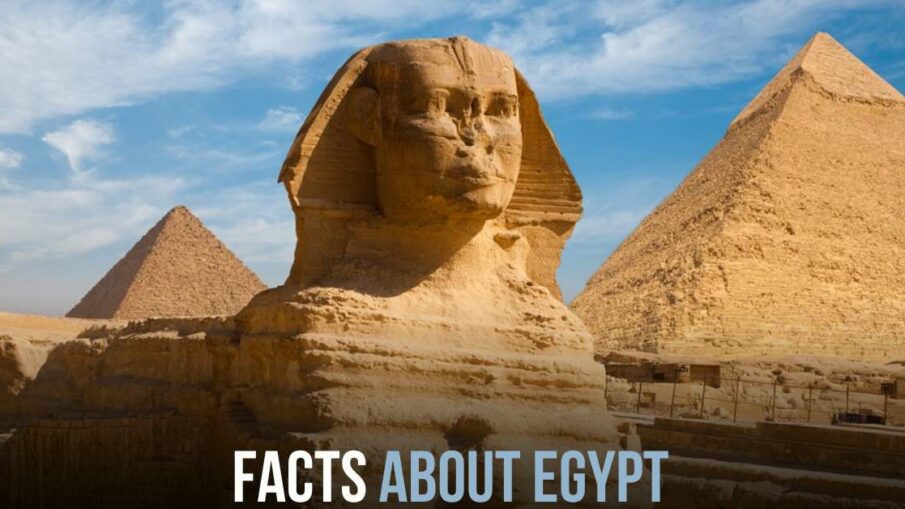Fact 1: The Pyramids – Tombs of Pharaohs
Egypt’s iconic pyramids, over 130 in total, stand as eternal monuments to the pharaohs, the rulers of ancient Egypt. These colossal structures were primarily built as tombs for pharaohs and their families, each a testament to the grandeur of their reign.
Fact 2: Mummification and the Afterlife
In ancient Egypt, the afterlife held profound significance. The belief that preserving a deceased person’s body through mummification would ensure the immortality of their soul was central. The process of mummification was a meticulous art, a bridge to the eternity of the afterlife.
Fact 3: The Mighty Pyramid of Khufu
Giza boasts the Pyramid of Khufu, the largest Egyptian pyramid. This architectural marvel carries a weighty distinction, for it weighs as much as a staggering 16 Empire State Buildings combined, symbolizing the grandeur of ancient Egyptian craftsmanship.
Fact 4: Makeup, Magic, and Protection
Both men and women in ancient Egypt embraced makeup. They adorned their eyes with green (copper-based) or black (lead-based) eye paint. Beyond aesthetics, they believed makeup held protective and even magical qualities, shielding them from the sun’s harsh rays.
Fact 5: The Unfurling Bandages
Unwrapped, the bandages of an Egyptian mummy could stretch an astounding 1.6 kilometers, offering a glimpse into the elaborate rituals of mummification and the meticulous care taken to preserve the deceased.
Fact 6: The Intricate Egyptian Alphabet
The Egyptian alphabet was far from simple, comprising more than 700 hieroglyphs. Each symbol held unique meaning, creating a rich tapestry of written communication. Explore the depth of these ancient symbols in our captivating hieroglyphics feature.
Fact 7: Multitude of Deities
Ancient Egyptians embraced over 2,000 deities, assigning gods to various facets of life, from perils to chores. Each deity played a vital role in maintaining balance, necessitating worship to ensure harmony.
Fact 8: Cats, the Sacred Companions
Cats held sacred status in ancient Egypt. Most households considered these feline creatures as cherished pets, symbols of good luck, and revered companions in daily life.
Fact 9: Gaming in Ancient Egypt
Do you enjoy board games with friends? So did the ancient Egyptians! Senet, a popular game, endured for over 2,000 years. Similar to throwing dice, it involved sticks to determine how many squares to advance on the game board.
Fact 10: Ancient Egypt’s Ingenious Inventions
Surprisingly, many inventions from ancient Egypt continue to shape our world today. These innovative thinkers gave birth to paper, pens, locks, keys, and even toothpaste. Their legacy resonates through time.
Bonus: Egypt Today – A Snapshot
Official Name: Arab Republic of Egypt Form of Government: Republic Capital: Cairo Population: 87,562,261 Official Language: Arabic Currency: Egyptian pound, guinay Area: 1,001,449 square kilometers Major Mountain Ranges: Eastern Highlands Major River: Nile
Egypt’s Geography and Landscape
The life-giving Nile River dominates Egypt’s landscape, turning arid desert into fertile land. Divided into Upper and Lower Egypt, the country thrives along the riverbanks, while the Nile Delta in the north is a patchwork of farms.
Egypt’s Incredible Nature
Diverse wildlife, including cheetahs, hyenas, crocodiles, and cobras, calls Egypt home. Protected regions house these creatures and more, preserving Egypt’s unique biodiversity.
The History of Egypt
Egypt’s history stretches back over 8,000 years, with the first settlers engaging in hunting, fishing, farming, and trade. A powerful king, or pharaoh, unified Upper and Lower Egypt around 3100 B.C., setting the stage for the construction of monumental pyramids.
Egyptian People and Culture
Egypt’s population is primarily Muslim, with a minority practicing Coptic Christianity. Family bonds are strong, and children play a vital role in agriculture and caring for elderly parents.
Egyptian Government and Economy
Egypt’s modern landscape is shaped by its strategic location, vast resources, and rich history. It is a democratic republic, though some argue about the extent of its democracy. Oil, gas, exports, and tourism drive its economy, while the Suez Canal remains a critical global artery.
As you delve into the fascinating world of Egypt, from ancient marvels to its vibrant present, you’ll discover a land that bridges history and modernity, offering endless wonders to explore.


Leave a Reply